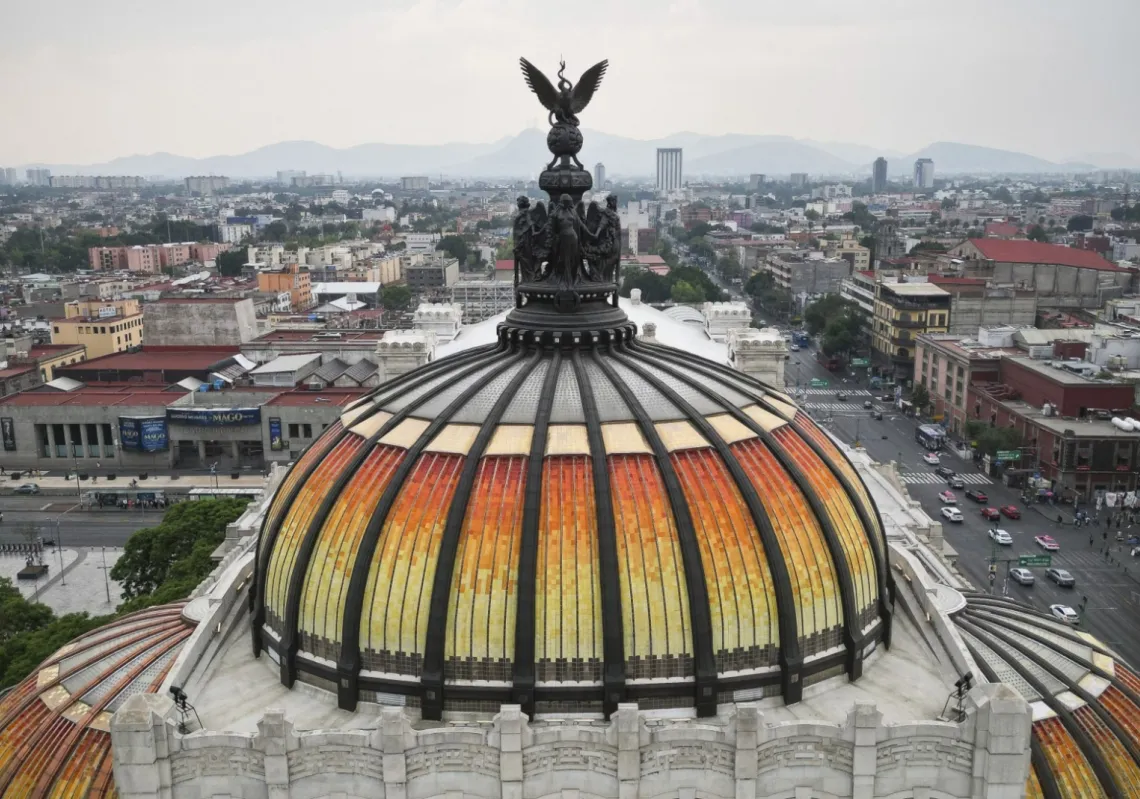Amal, a woman in her forties, has been visiting Bab Touma for 20 years – even on its worst days.
"I got into the routine of regularly passing through Bab Touma after moving to a neighbourhood nearby and taking walks there on winter mornings and summer evenings," she said. "I never stopped this routine, even during the civil war. I could never abandon this dear place while it was suffering from shelling and shooting."
Al-Hara has plenty of entertainment and nightlife options, but it also caters to a wide array of people interested in other things.
Thalia, a yoga trainer, goes there to relax, despite the noise.
"I work two jobs, 10 hours a day. In the mornings, I'm a government employee and in the evenings, I teach yoga classes."
"I usually get overwhelmed by the endless questions I get, whether it's from visitors at my government job or yoga students – let alone the high living expenses and deteriorating service industries. So, I often come to Al-Qishleh Park to rest and reset."
Tamer, a young man in his twenties, likes to go to pubs at night to dance away his anxiety while he awaits news about his visa application to the UK.
"I'm stressed and under a lot of social pressure. I come from a conservative family that rejects the concept of male dancing. So, I come here regularly to dance since my friends accept me entirely as I am," he said.
Enduring hospitality
As you wander through the old homes in the Syrian capital, you can't help but notice the distinct architecture that surrounds you – from the metal door knockers in the large entryways to the narrow pathways that lead to a quaint courtyard.
In the middle of the patio stands a marble water fountain adorned with geometrical motifs and surrounded by lemon, orange, and jasmine trees, as well as damask roses.
At the side of the courtyard, a reception room might welcome guests in search of a meal. You'll likely find its doors open, due to a long-standing tradition of hospitality that offers food and drink to those in need.
In the evenings, finding a table at one of the neighbourhood's restaurants or pubs is a gargantuan feat. Although not the fanciest in Damascus, they're certainly among the most popular.
This is especially evident on Thursday nights – it's the start of the weekend, and everyone is eager for a change of scenery. As if making up for the time they lost to the civil war, visitors spend the night eating, drinking, and dancing until the early hours of the morning – a small but poignant reminder that they're alive.
Meanwhile, old, traditional cafes serve as hubs for intellectual, political, and cultural enthusiasts.
In the 19th century, those same cafes – over 100 establishments – became "incubators" of many Syrian and Arab authors and intellectuals. For instance, the great Iraqi poet Muthaffar al-Nawab was a regular guest of the Damascene café Havana.
But in the last decade, some of them have had to succumb to complete overhauls. Many owners renovated their cafés to look more modern after their profits dropped and, in the process, many lost their original charm.
Now, most of these cafes are frequented by visitors to watch football games, listen to live music, escape the scorching heat or nipping cold, and take advantage of the power and internet service to work or study.
Sadly, the Damascene café in its traditional sense seems to have disappeared. Many "regulars" have passed away, while others are too old to leave their houses.
Near the Umayyad Mosque, however, the Al-Nofarah café still awaits one of its long-devoted guests – an elderly man who insists on his usual seat, with only three stable legs.
He – and the few other regulars you'll spot, every now and then – sips one cup of coffee after another, as if he is drinking in honour of all his friends who have since passed.
It serves as a reminder that history is not just a place, but a people, too.















